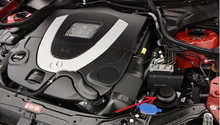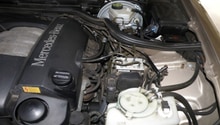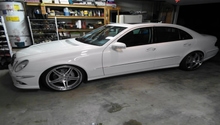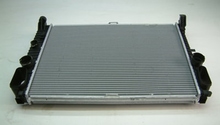Mercedes-Benz E-Class and E-Class AMG: How to Replace Power Steering Fluid
Mercedes-Benz E-Class and E-Class AMG vehicles don't have a regular interval to change your power steering fluid, but it would do you well to change it as soon as you feel any difference in your steering.
This article applies to the Mercedes-Benz E-Class and E-Class AMG (2002-2009).
Changing the power steering fluid on your Mercedes-Benz E-Class isn't a difficult task and no special tools are needed. You will likely have difficulty finding anything from Mercedes-Benz on how to do this as they do not require it. Although the power steering is a sealed system that should never get contaminated, this does not preclude the fluid from breaking down under normal use. When the fluid gets low, power steering will be negatively impacted. This can result from badly worn fluid as well as leaks.
Although these cars were not meant to have regular flush intervals, there is no actual easy or convenient way to do it. Although no flush valve is present, the system can still be flushed out; it just takes more time and more iterations of this process. A professional can do the job, not likely any better than you can do it yourself, but will charge a pretty penny to do it. Save your money and follow these steps to flush your power steering fluid.

Materials Needed
- Hydraulic floor jack
- Two jack stands
- Turkey baster or similar suction device
- Replacement fluid according to specification, most likely fully synthetic Pentosin CHS 11S
Step 1 – Lift the front end and place on jack stands
You will need to raise the front of the car with a floor jack at the approved jacking locations. Set the front end on two jack stands at the appropriate safe locations. The wheels will need to be turned left to right from full stop to stop.

(Related Article: How to Jack Up Your Benz - Mbworld.com)
Step 2 – Open power steering reservoir
Open the power steering reservoir and insert a turkey baster or other such suction device. Remove almost all of the power steering fluid from the reservoir and expel into a container. Add fresh power steering fluid back to the cold level indicator.

Pro Tip
Power steering fluid is rather nasty stuff. Take care not to let any spill on any engine components, paint or garage floor as it is also very slick.
Step 3 – Turn the steering wheel back and forth
Replace the cap on the power steering reservoir. Turn the steering wheel from left to right as far as it will go in both directions for about 10 cycles.

Pro Tip
Some people opt to disconnect the return hose from the reservoir while doing this procedure. If you choose this method, you will need a second person to turn the wheel while you hold the hose in the disposal container to avoid any spills.
Step 4 – Repeat this process
Take it for a test ride to make sure the steering is working properly. Continue driving the car for 50 - 60 miles, then repeat this entire process using another liter of clean fluid. This will ensure that the system is completely flushed. Remember to use the proper measurement indicator on the reservoir depending on the temperature of the engine and power steering fluid.
Related Discussions and Site
- Power Steering Flush - MBWorld.org
- Photo DIY: Power Steering Change - Benzworld.org
- Best Way to Flush Power Steering Fluid? - MBWorld.org






